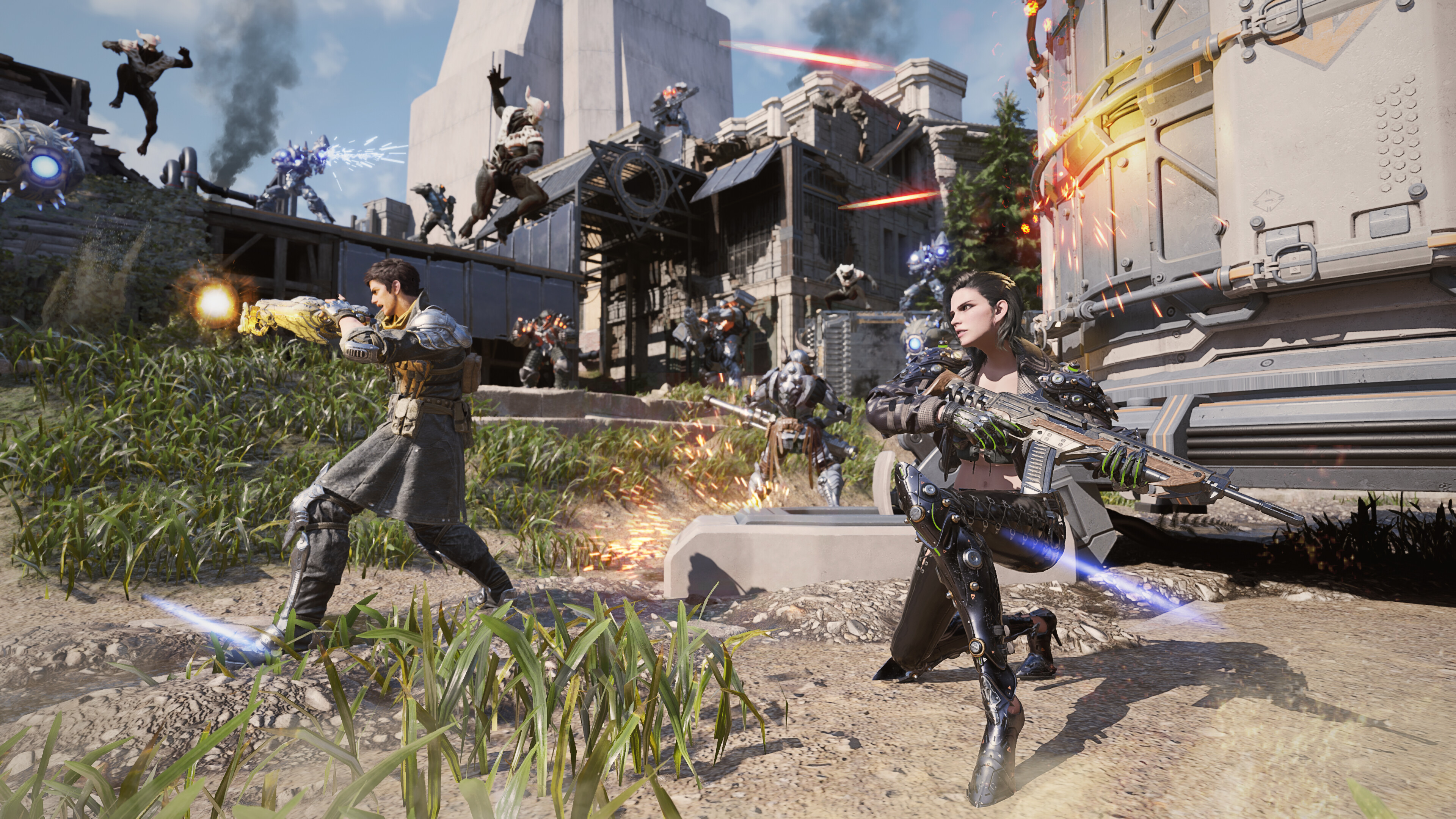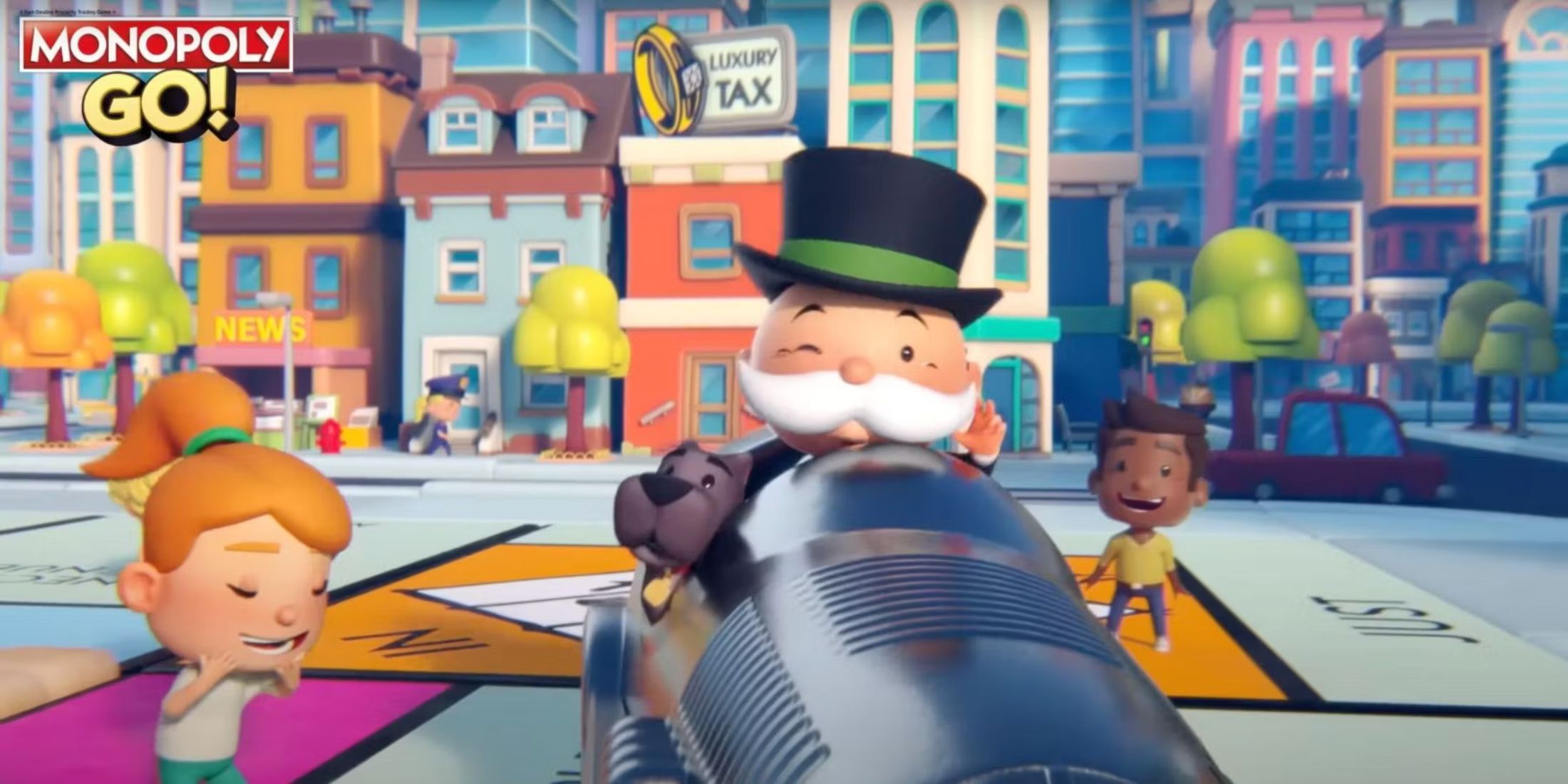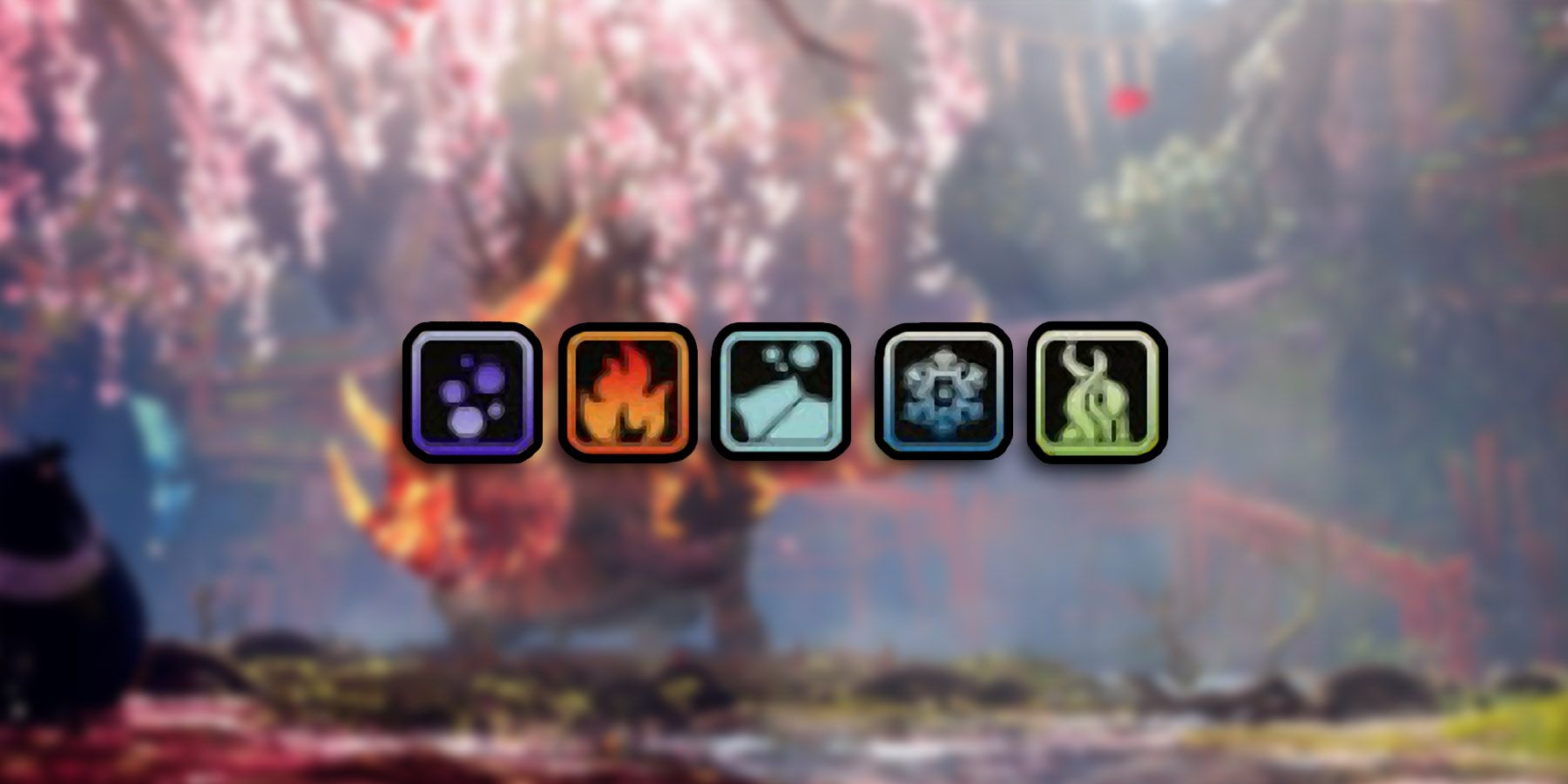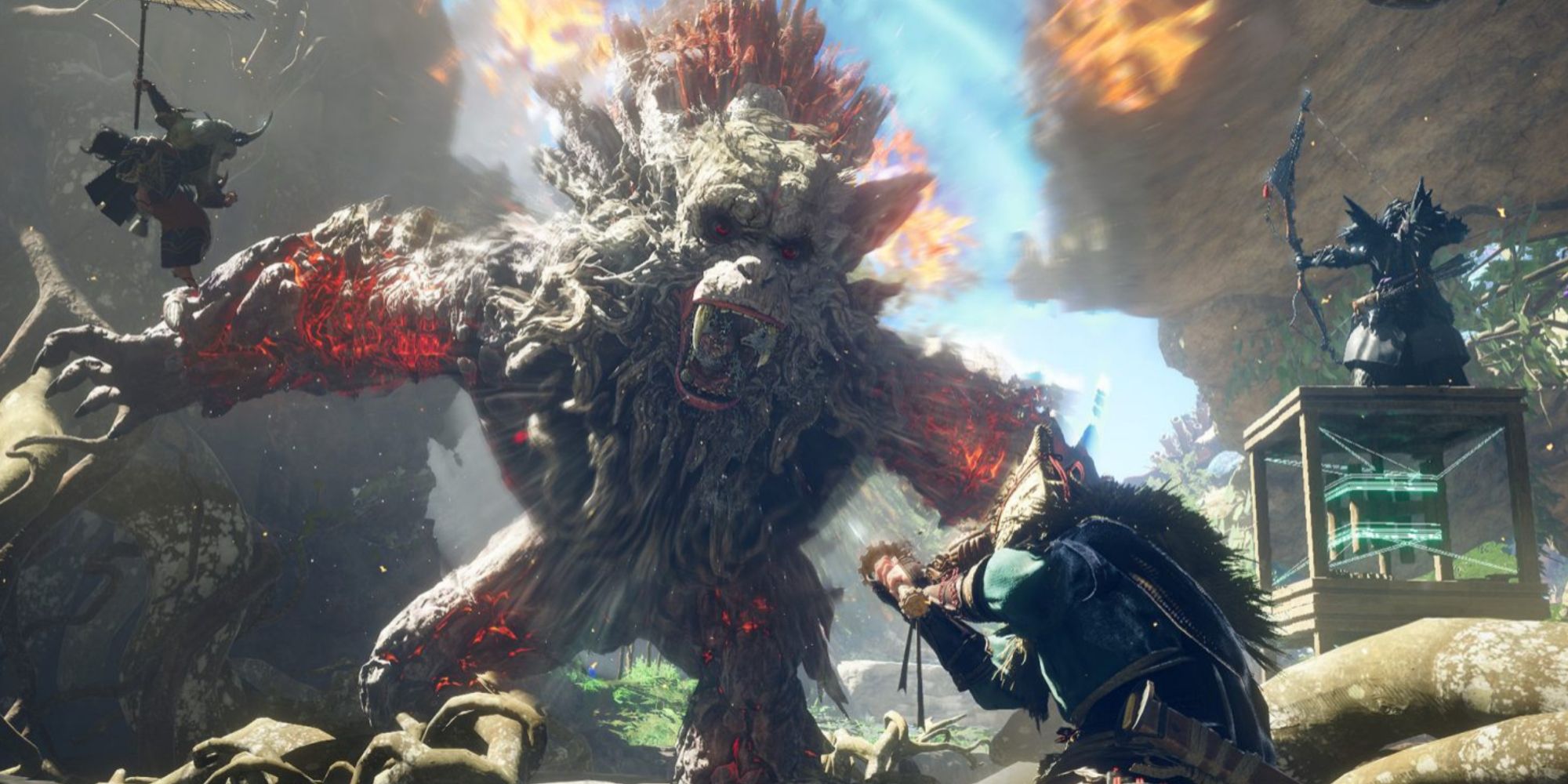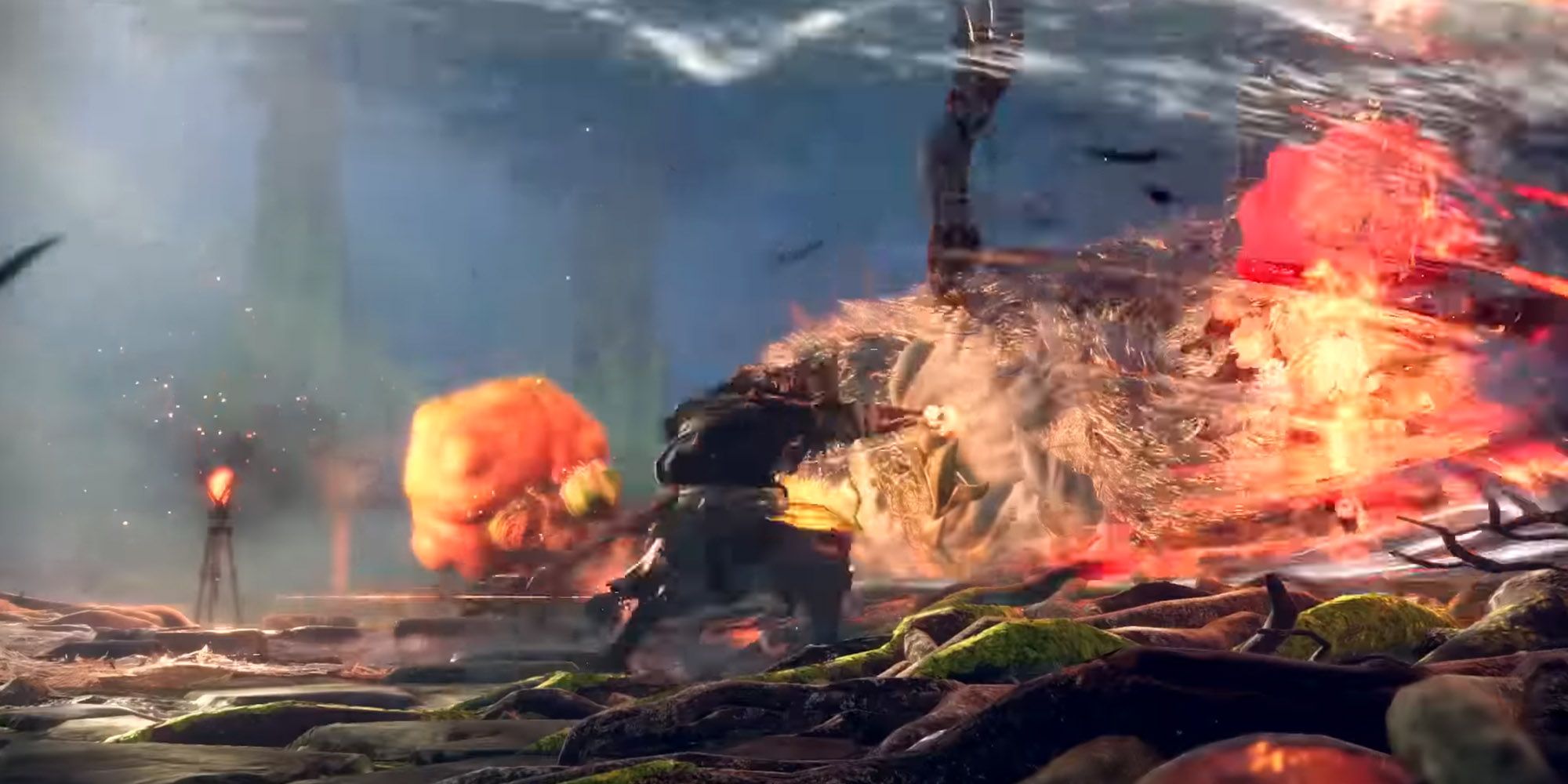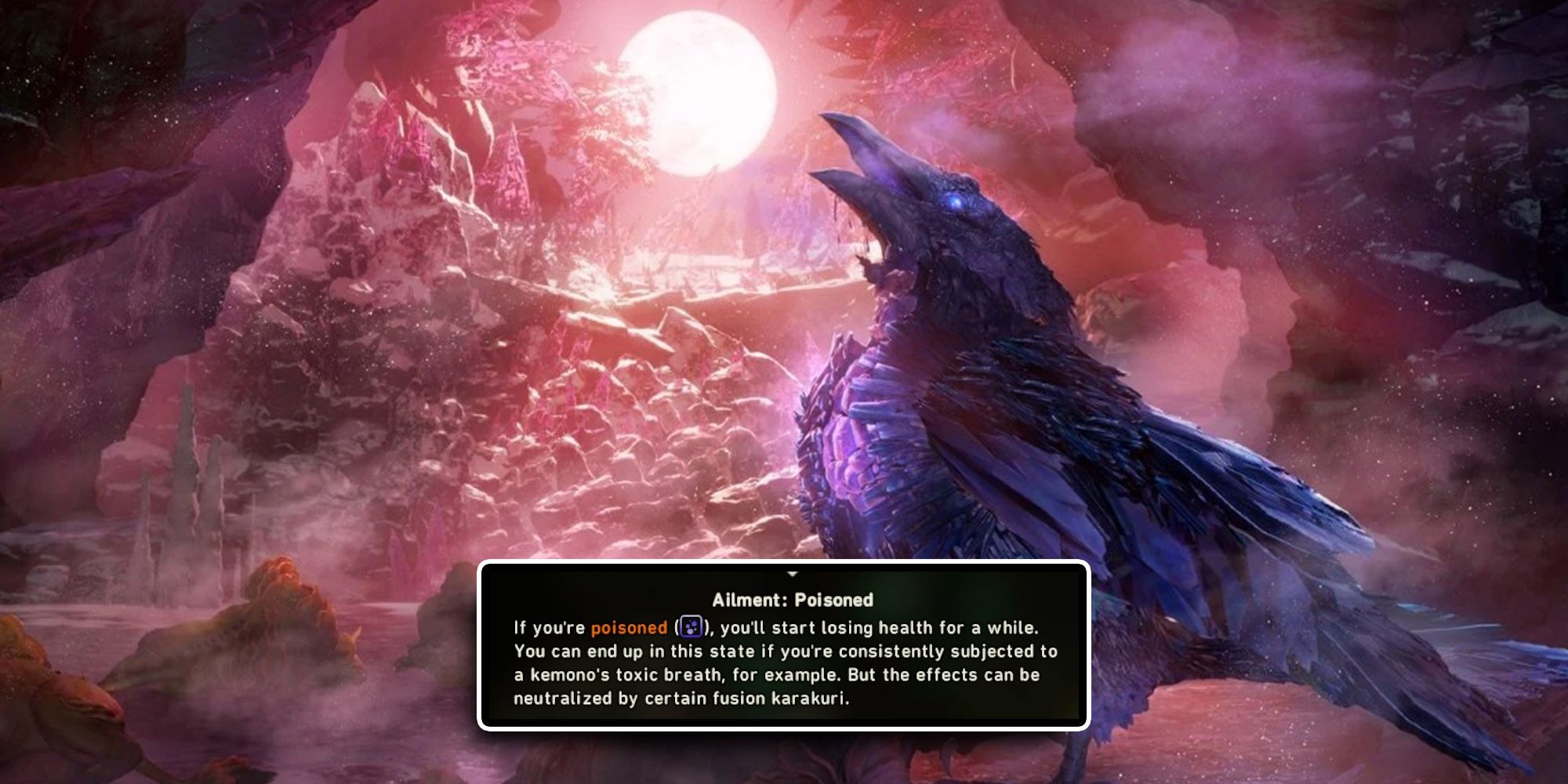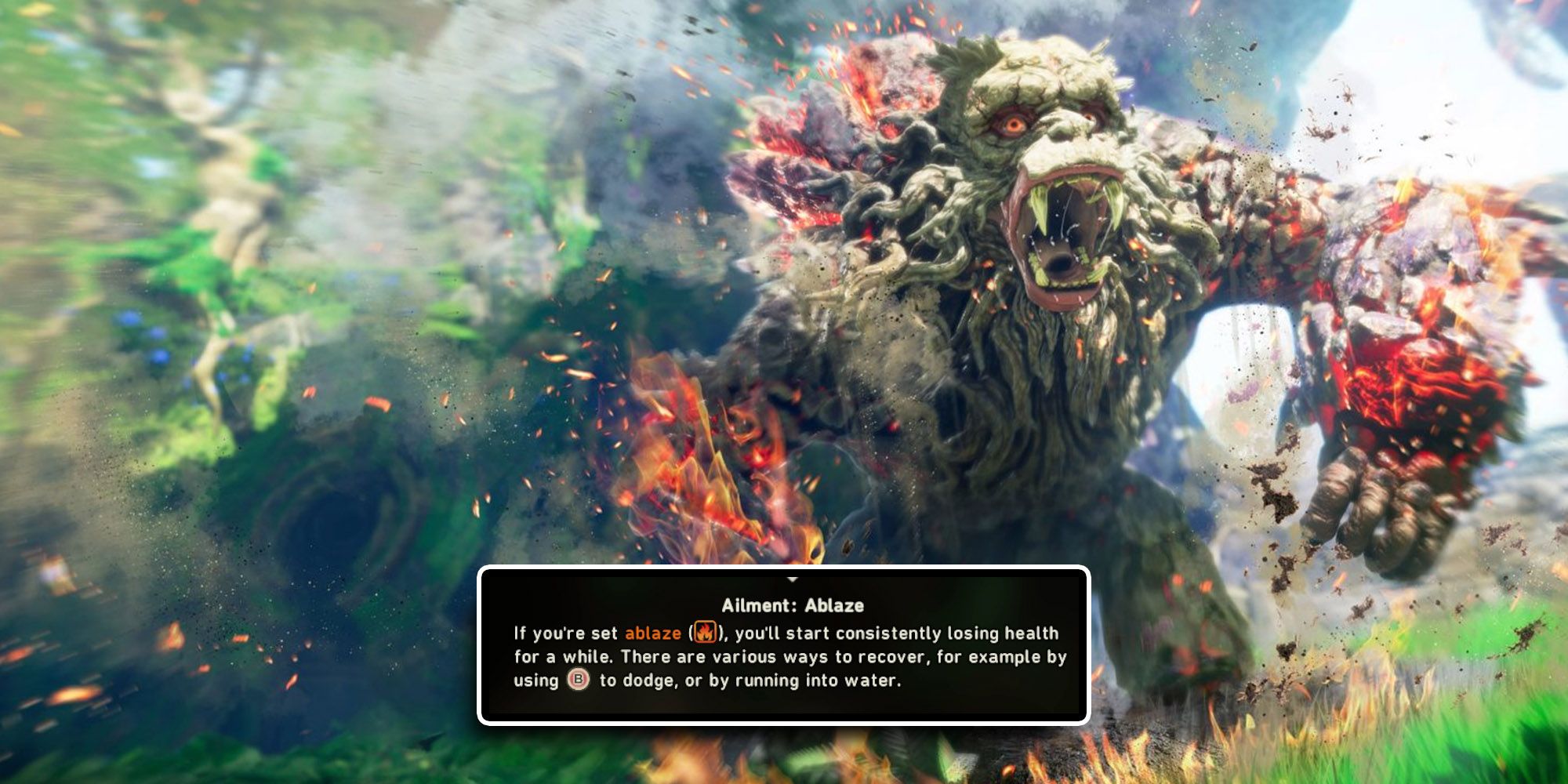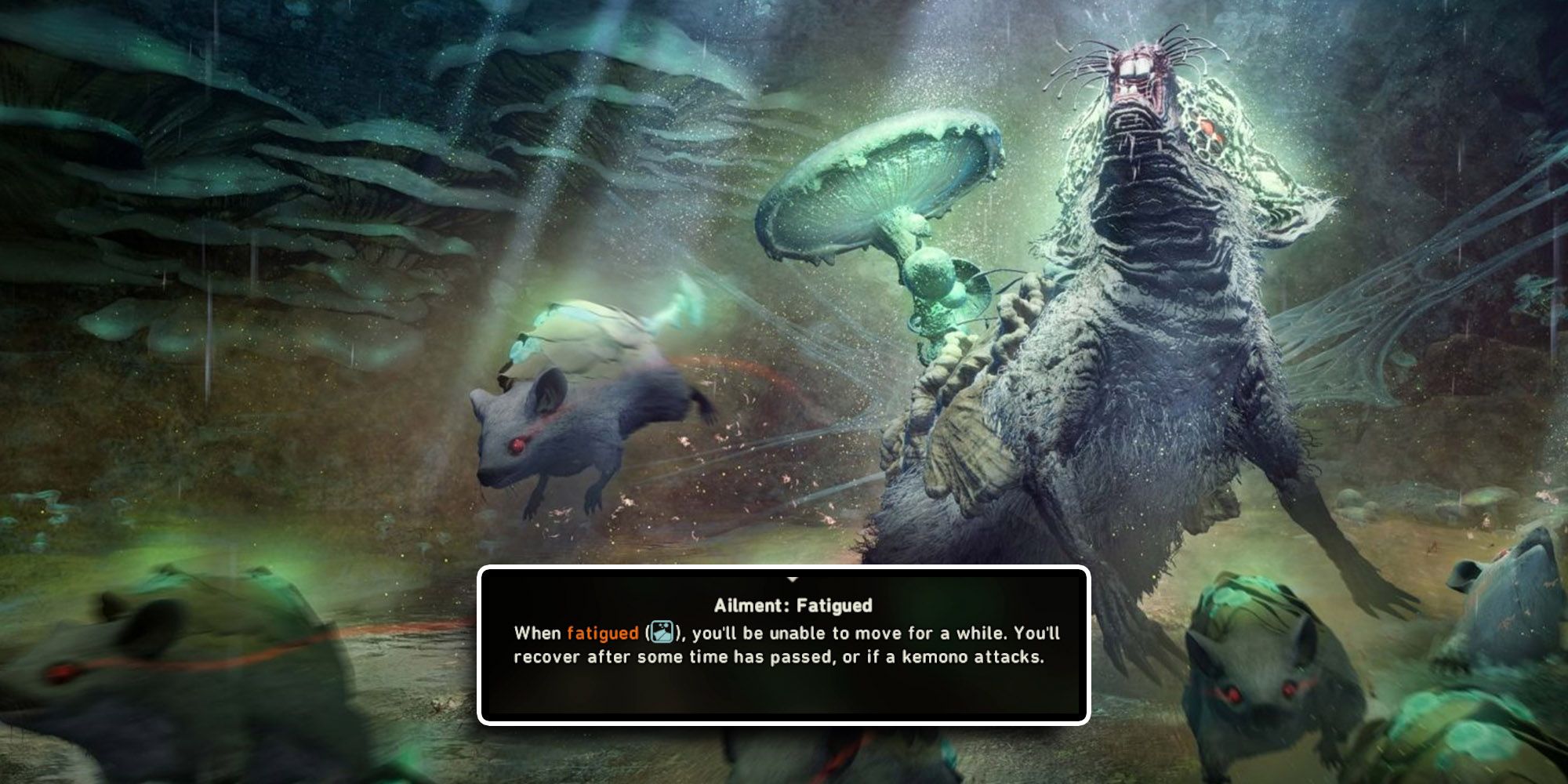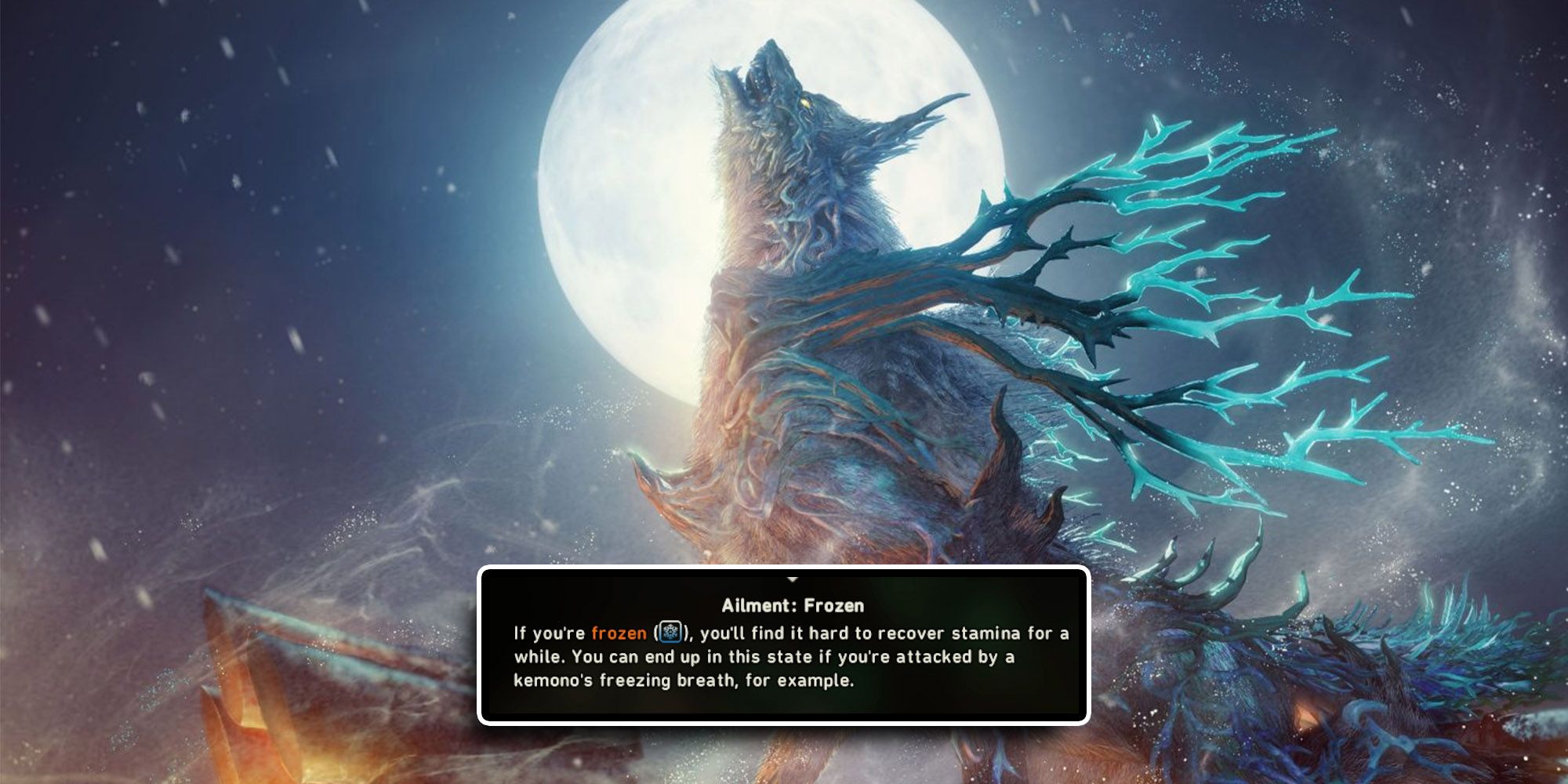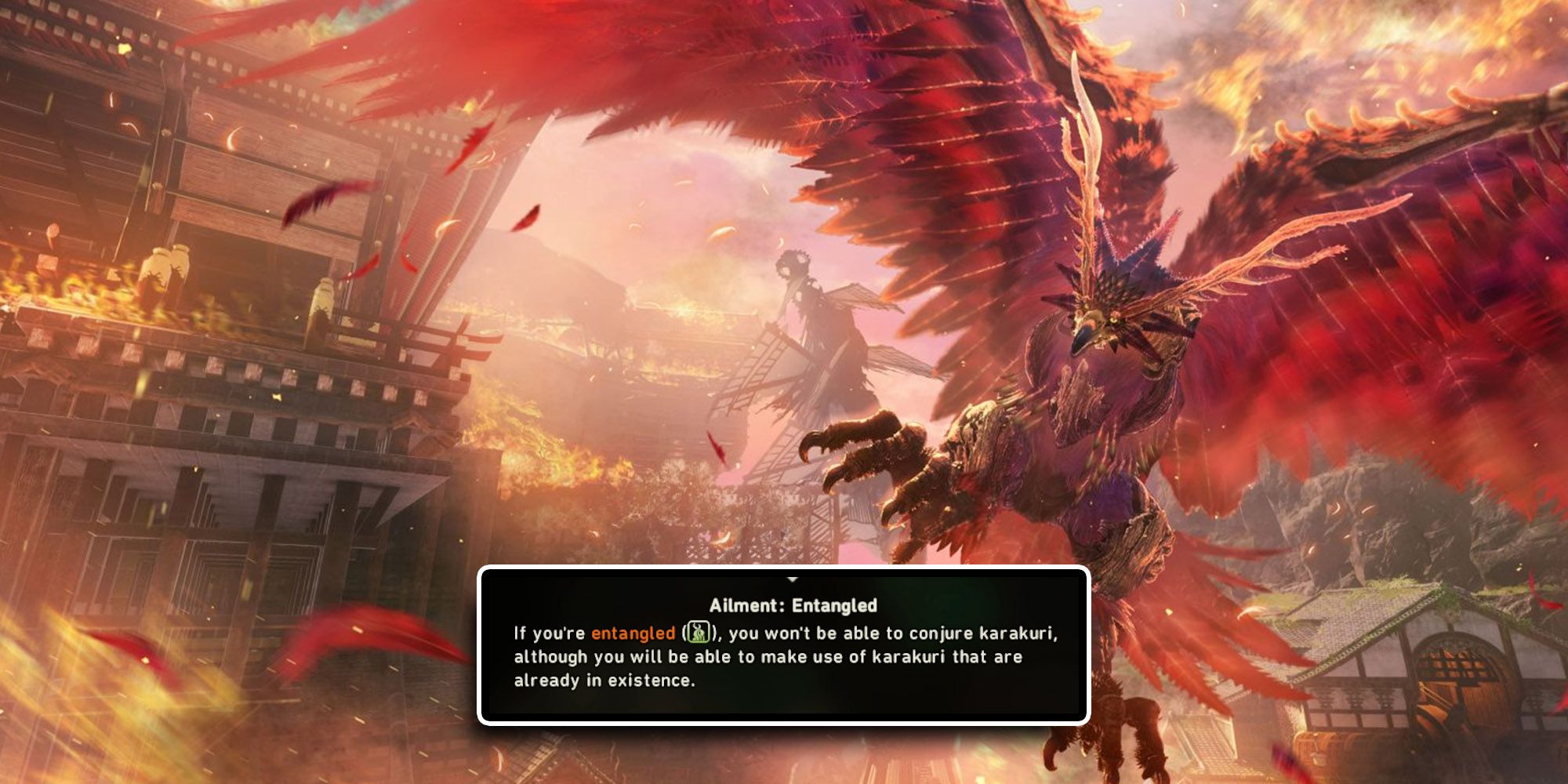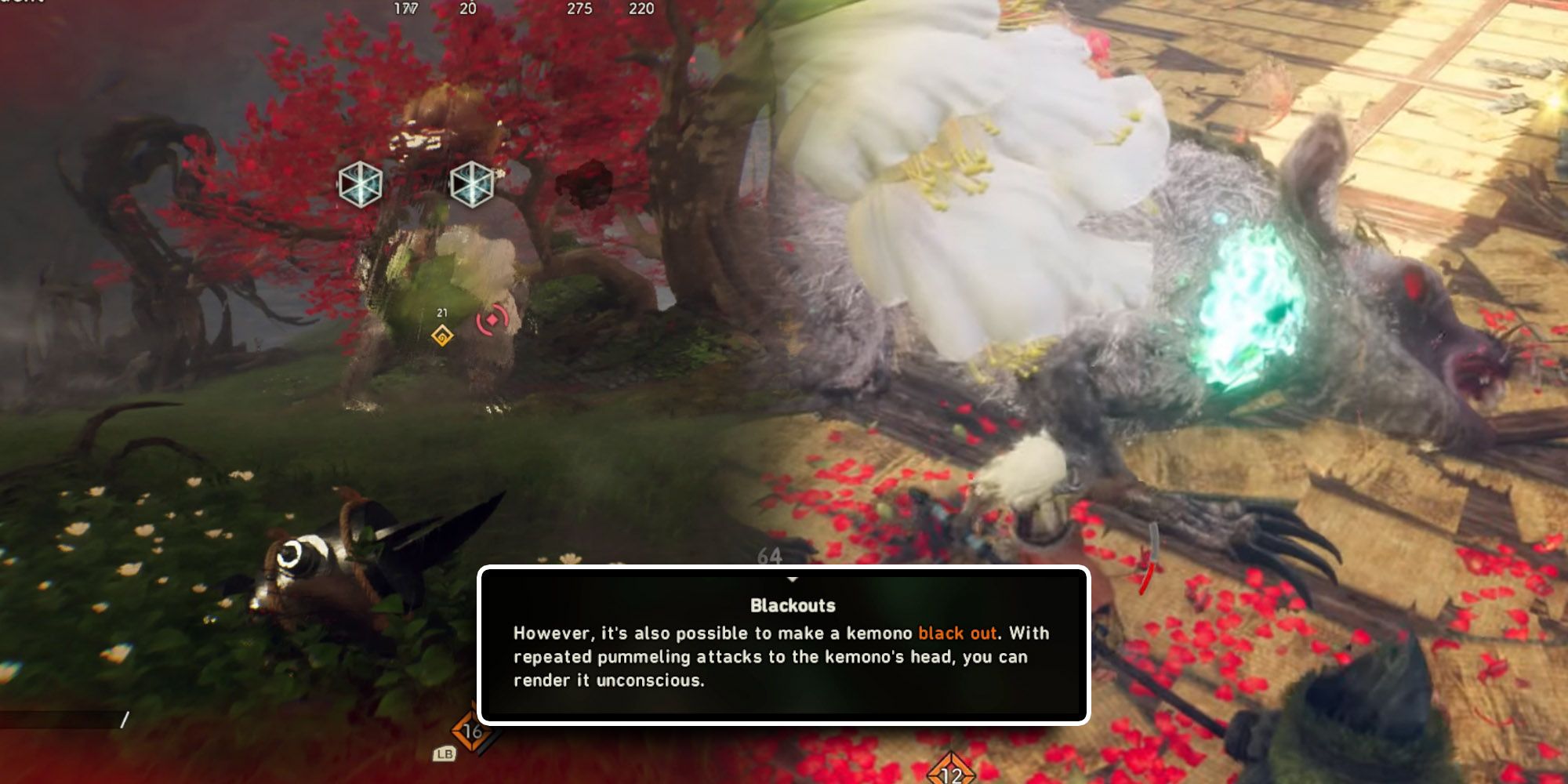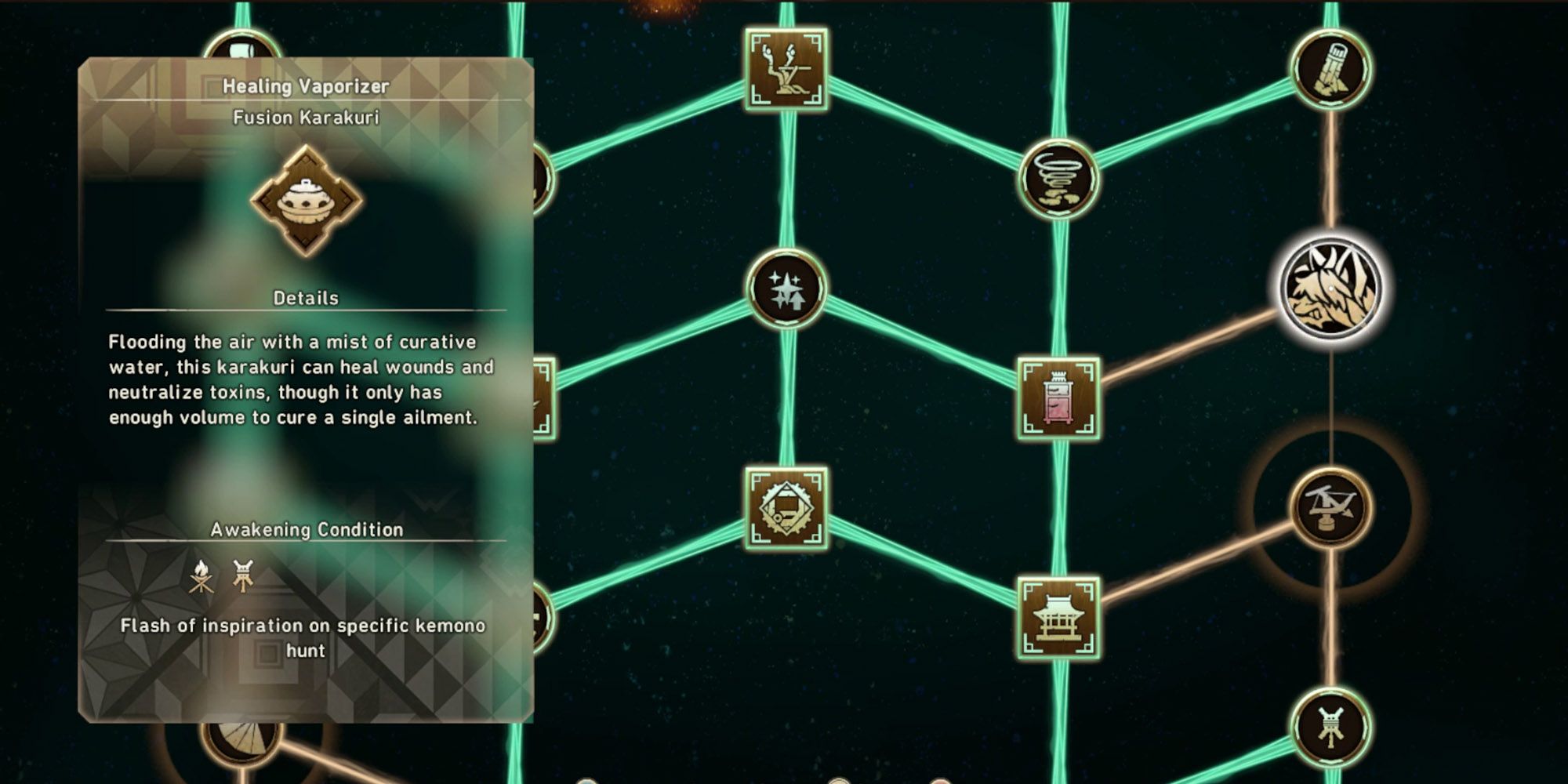Status Ailments in Wild Hearts can be a little confusing, as are a few other things about the game, especially for those coming straight from other Monster Hunter or monster-hunting games. Typically, there are also status ailments in these games, but they tend to only have specific weapons that players are able to use to inflict them or, at best, consumables that directly counter them.
In Wild Hearts, Status Ailments work a bit differently altogether, both in how they're inflicted and how they're cured. So, let's go over some of the most burning questions about Status Ailments in the game, and how exactly they function.
Players Being Afflicted With Ailments Vs Players Inflicting Ailments On Kemono
Now all the Status Ailments that a Kemono can inflict on the player can also be used by the said player against other Kemono. In-game, players can recognize this by any of the 'Wielder' Skills (such as Poison-Wielder, Ice-Wielder, etc...) found on weapons and Talismans.
But, the effect of each Ailment is sort of a dice role on how it works on a player vs a Kemono. So, let's go over each Status Ailment, and at the bottom of each one, note the differences in how it affects Kemono.
How Status Ailments Are Inflicted
While Elemental Damage in Wild Hearts is simply just direct damage of that specific elemental type applied to Kemono through attacks and reduced by the Kemono's Elemental Resistance, Ailments are inflicted a bit differently. When a player has a 'Wielder' Skill equipped, the accepted method is that they'll need to impart a high number of attacks on a Kemono to inflict the intended Ailment.
Basically, the 'affliction' is seemingly built up through repeated attacks rather than raw Ailment numbers, so weapons that attack quickly and often, such as the Clawblade or Bladed Wugasa, are great weapons to build around Status Ailments. As of February 2023, it's still a bit unclear as to what the 'percentages' next to these Wielder Skills mean exactly, but the assumption is that the higher the percentage, the more likely an attack is going to increase the Ailment meter against the Kemono.
Poisoned
Poison is one of the Ailments players will likely encounter early on, as an early Kemono called the Fumebeak uses it quite a lot. As one would expect, while a player is Poisoned they will slowly take damage over time. Thankfully, the damage isn't all that noticeable but is still enough that players should keep a constant eye on their HP while it is active. After a while (once the bar to the right of the player character is empty), the Poison will dissipate.
Poison is one of the rare Ailments where it affects Kemono in the exact same way. When Poisoned (visually seen by a purplish energy/mist being visible on the Kemono's body), Kemono will just take some damage over time for a set duration.
Ablaze
Ablaze is another early-game Status Ailment and one that Wild Hearts' first big 'wall' Kemono, the Lavaback, will make players understand through constant exposure. Like Poison, when a player is fully set Ablaze they'll take damage over time, but a bit more damage per tick than with Poison. In exchange, the Ailment is much easier to cure as players can either run into water or simply spam their Roll input to get it to go away faster. Of course, they can also just ignore it and wait for the bar to deplete, but that's a bit riskier.
It should also be noted that Ablaze is an Ailment that is not inflicted by Fire Element damage, they're two separate things. Some Fire Element weapons further down the line have a Skill that allows them to set targets Ablaze too. But, the primary method of inflicting this Ailment overall is through the Torch Basic Karakuri or the Star Bomb Fusion Karakuri, which is something that a lot of players still don't know.
For Kemono, however, being Ablaze (seen by when a Kemono is literally 'on fire') works a bit differently. Instead of taking damage over time as they do with Poison, Kemono that are Ablaze will thrash around wildly to put the fire out, with no specific target or goal in mind other than smothering the flames. More often than not, this leaves them open to being attacked.
Fatigued
This next Ailment, Fatigued, is essentially the 'Sleep' Ailment from the Monster Hunter games. Once the bar fills, the player is left completely vulnerable as they pass out where they're standing. After being hit once by the Kemono or after a certain amount of time, the Ailment goes away. This Ailment is primarily inflicted by clouds of gas released by monsters during attacks, so it's a bit easier to avoid compared to other Ailments.
Inflicting Fatigued on a Kemono (seen by the same bluish mist that's seen when a player is Fatigued), however, has a different effect. While Fatigued, Kemono will take more 'Impact' from attacks, leading to them blacking out (AKA being stunned) much faster. Therefore, having this effect on a Weapon with high-impact damage, such as the Maul, is a pretty clear synergy. After some time or after a set number of attacks, the effect of Fatigued will dissipate from them.
Frozen
Up next is the Frozen Status Ailment, and it's another one that most players could likely guess the effect of. While Frozen, players will notice that their Stamina refills at a much slower rate than usual and will continue to do so until the Ailment runs out. The in-game description only states that the Ailment will run out after a certain amount of time, but some players are reporting that running through/activating the Torch Basic Karakuri or really any exposure to fire reduces the buildup quicker as well.
And along that same train of thought, one would expect that inflicting Frozen on a Kemono (visible by the icy mist coming off of them) would make them tire themselves out quicker from a lack of Stamina regen, but being Frozen actually just causes Kemono to 'reel' (AKA recoil) from attacks more often while it's active. Essentially, this is exceptionally useful in interrupting Kemono attacks while they're Frozen, especially in multiplayer sessions.
Entangled
And for the last Status Ailment, Entangled directly affects the new system Wild Hearts adds to the monster hunting genre, the Karakuri. While Entangled, players are unable to summon any Karakuri, be it Basic, Fusion, or Dragon. Thankfully, any Karakuri already conjured before the Ailment took effect are still usable. Again, this is another Ailment that only seems to have a duration and no other method of curing it quickly.
When Kemono are Entangled (visible by leaves constantly falling from their bodies), Karakuri deal more damage against them. It's not entirely clear as to if this applies to Karakuri-assisted attacks, such as an attack after bouncing off a Spring Karakuri, but at the very least it'll make the Pounder, Star Bomb, and even Pile Driver hit harder.
Blackouts
This next one, just called Blackout, 'technically' isn't a Status Ailment, or at least it isn't labeled as one in the Cyclopedia, but it essentially functions as a 'Stunned' Ailment. When a player is afflicted with Blackout, they get the comical stars above their head (as if combat wasn't wacky enough at times) and can't move for a short duration. It's very similar to Fatigued, but seemingly with less time in effect. Still, since it usually happens as a result of a big Kemono attack, it's a Status Ailment that usually leads to a player perishing.
For Kemono, however, Blackouts are much more punishing and difficult to inflict. Hammer players from MH are very aware of the fact that the more they targeted and hit a monster's head, the faster they'd get dazed and knocked down. It's the same sort of concept in Wild Hearts. As players deal repeated pummeling (primarily Impact) attacks to a Kemono (with extra applied for hitting the head), this effect builds. Once it's inflicted, the Kemono falls over, has stars over their head, and is knocked out helplessly on the ground for a pretty hefty amount of time.
Alternate Methods Of Curing Status Ailments
Now it's obvious that the devs of Wild Hearts over at Omega Force designed these Status Ailments around the idea of players being able to wait out their effects without much trouble or using certain Fusion Karakuri to get rid of these effects. These are the upgraded Healing Mist (both the player's Healing Mist and the Tsukumo's variant of it) and default Healing Vaporizer Karakuri.
But, there's also a Skill that players should look out for which directly counters Status Ailments, Monstrum Water. This Skill is found earliest on the Basara Helm and makes it so that drinking Healing Water also cures Status Ailments for the player.
Wild Hearts is available on PC, PS5, and Xbox Series X/S.

